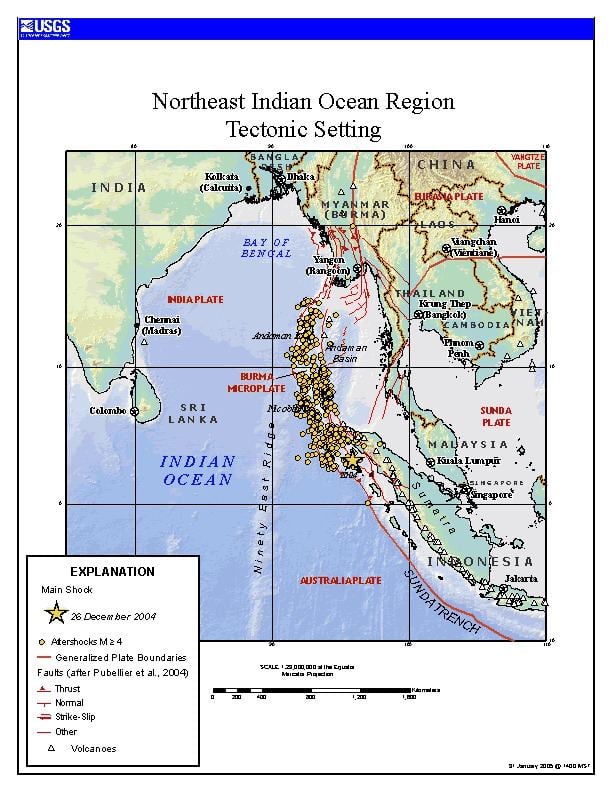 | ||
Points of interest Lake Toba, Borobudur, Prambanan, Gunung Gede Pangrang, Dieng Plateau | ||
The Sunda Arc is a volcanic arc that produced the islands of Sumatra and Java, the Sunda Strait and the Lesser Sunda Islands. A chain of volcanoes forms the topographic spine of these islands.
The Sunda Arc marks an active convergent boundary between the East Eurasian plates that underlie Indonesia, especially the Sunda Plate and the Burma Plate, with the India and Australian Plates that form the seabed of the Indian Ocean and the Bay of Bengal. The Sunda Arc is a classic example of a volcanic island arc, in which all the elements of such geodynamic features can be identified.
The India and Australian Plates are subducting beneath the Sunda and Burma plates along the Sunda Arc. The tectonic deformation along this subduction zone in the Java Trench (also known as the Sunda Trench) caused the 2004 Indian Ocean earthquake of December 26, 2004.
Notable features
The Sunda Arc is home to some of the world's most dangerous and explosive volcanoes. The 1815 eruption of Mount Tambora on Sumbawa Island is thought to be the most massive in recorded history. This subduction zone was the site of one of the largest known eruptions, the Toba supereruption, which, with a volcanic explosivity index of 8, expelled 2,800 km³ of magma. The resulting caldera has become Lake Toba.
The loudest noise in recorded history occurred during the 1883 eruption of Krakatoa and was heard 5,000 km (3,100 mi) away. Hundreds of thousands of people have been killed by these eruptions and by episodes of activity at other volcanoes, including Papandayan, Galunggung, Merapi and Kelud.
